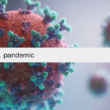
Medication safety and disease control prevention are paramount to ensuring public health and safety. With the rising complexity of medical treatments and the prevalence of chronic diseases, the importance of managing medication errors and enhancing disease prevention cannot be overstated. This article explores these critical issues, guided by insights from the Centers for Disease Control and Prevention (CDC), the World Health Organization (WHO), and Healthy People 2030 objectives.
Understanding Medication Safety
Defining Medication Safety
Medication safety refers to the practices and measures taken to prevent medication errors and overdoses and ensure the proper use of medication. It’s a key component of patient safety and health care quality.
The Role of Medication Safety Programs
Medication safety programs are designed to improve medication use and reduce the risk of errors. These programs often involve educating healthcare providers and patients about safe medication practices.
Medication Errors: Causes and Prevention
Identifying Common Medication Errors
Medication errors can range from prescribing the wrong medication to incorrect dosage and improper administration. Understanding these errors is the first step in prevention.
Strategies to Prevent Medication Errors
Preventing medication errors involves multiple stakeholders, including healthcare providers, pharmacists, and patients. It includes measures like electronic prescribing, patient education, and medication reconciliation.
The Role of Disease Control in Public Health
Understanding Disease Prevention
Disease prevention encompasses measures taken to prevent the occurrence of disease, such as vaccinations, healthy lifestyle choices, and public health campaigns.
Chronic Disease Management
Managing chronic diseases is crucial to disease control. This includes patient education, regular screenings, and effective treatment plans.
The Impact of Medication on Disease Control
Medication in Treating and Preventing Disease
Medications play a vital role in both the treatment and prevention of diseases. From antibiotics to vaccines, they are essential tools in the public health arsenal.
Balancing Medication Use and Safety
While medications are necessary for disease control, ensuring their safe use is equally important to prevent complications like medication overdoses.
Patient Safety and Health Outcomes
Emergency Department Visits Due to Medication Errors
Medication errors can lead to emergency department visits, highlighting the need for effective medication safety practices.
The Role of Health Care Providers in Medication Safety
Healthcare providers play a critical role in medication safety, from prescribing to monitoring treatment outcomes.
The Importance of Public Health Initiatives
Centers for Disease Control and Prevention (CDC) Efforts
The CDC’s efforts in disease control and medication safety are crucial in shaping public health policies and practices.
Healthy People 2030 Goals
Healthy People 2030 sets forth objectives aimed at improving health outcomes, including targets related to medication safety and disease prevention.
Medication Safety in Special Populations
Children and Medication Safety
Special considerations are needed when administering medication to children, given their unique physiological and developmental characteristics.
Elderly Population and Chronic Disease
The elderly population often deals with multiple chronic conditions, making medication management and disease prevention complex but essential.
Improving Medication Safety: A Collaborative Effort
The Role of the World Health Organization (WHO)
The WHO plays a pivotal role in setting international standards and providing guidance for medication safety and disease control.
Community and Healthcare Provider Collaboration
Collaboration between communities and healthcare providers is key to enhancing medication safety and effective disease control.
Frequently Asked Questions
What are the safety precautions for medication?
Here are some safe ways to take your medicines:
Do what you're told. Read all of the drug labels and make sure you do what they say.
Remember to take your medicine on time.
On a light.
Tell us about problems.
Talk to your doctor about how much you drink, smoke, and use drugs.
Get help from the people you care about.
Before you stop, check.
Do not share.
What is medication safety?
Medication safety, which means not getting hurt by medical care or mistakes made by medical professionals while taking medications, should be given the same level of importance, since medications are used so often and can cause serious harm.
What is an example of prevention medication?
Anastrozole is a drug that some people use to avoid getting cancer because it may stop tumors from forming in women who are more likely to get breast cancer. People who have already been diagnosed with breast cancer may also use it as part of their care.
Conclusion
Medication safety and disease control prevention are critical aspects of public health. By understanding the intricacies of medication errors, embracing effective prevention strategies, and harnessing the power of public health initiatives, we can make significant strides in protecting patient safety and controlling diseases. This collective effort requires the participation of healthcare providers, patients, and public health organizations to create a healthier world for all.






